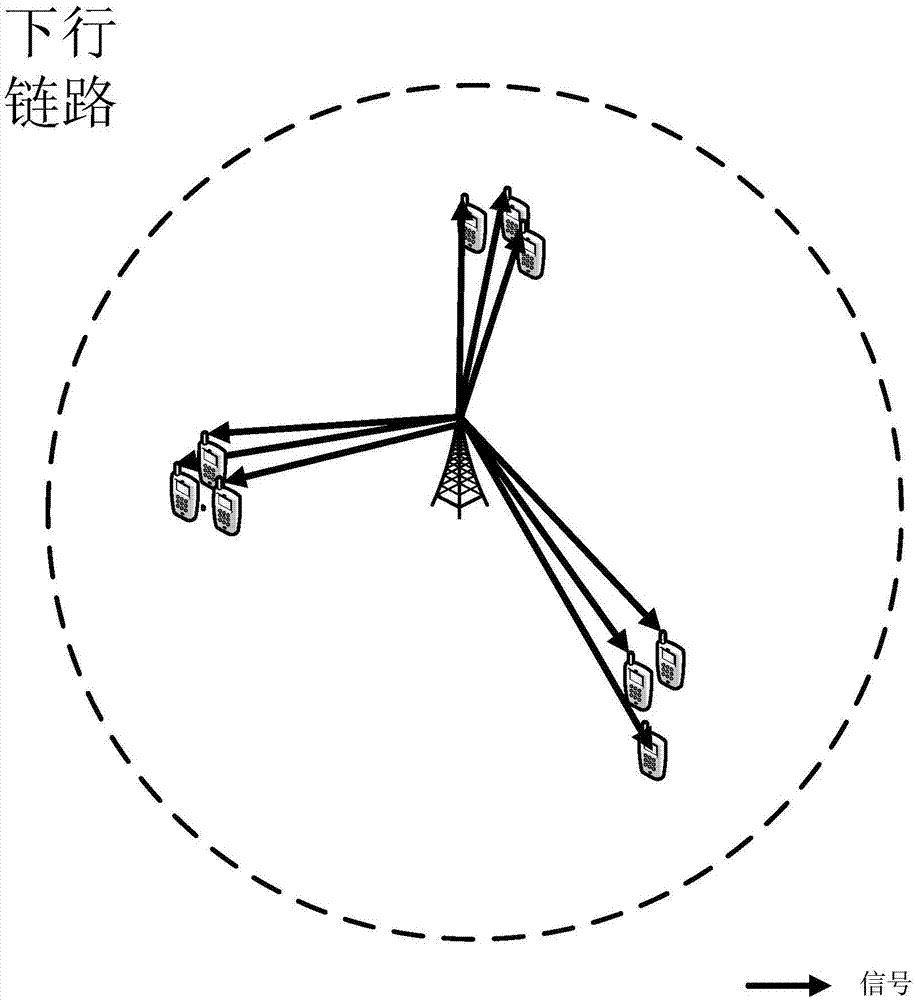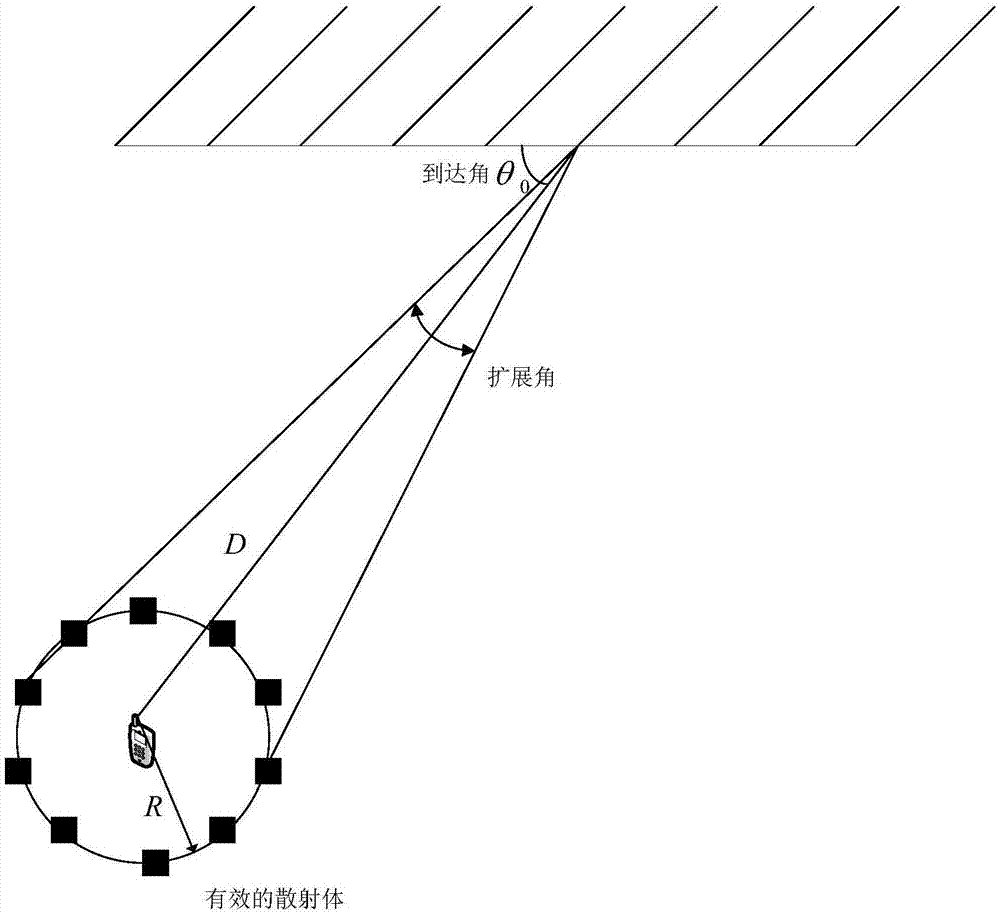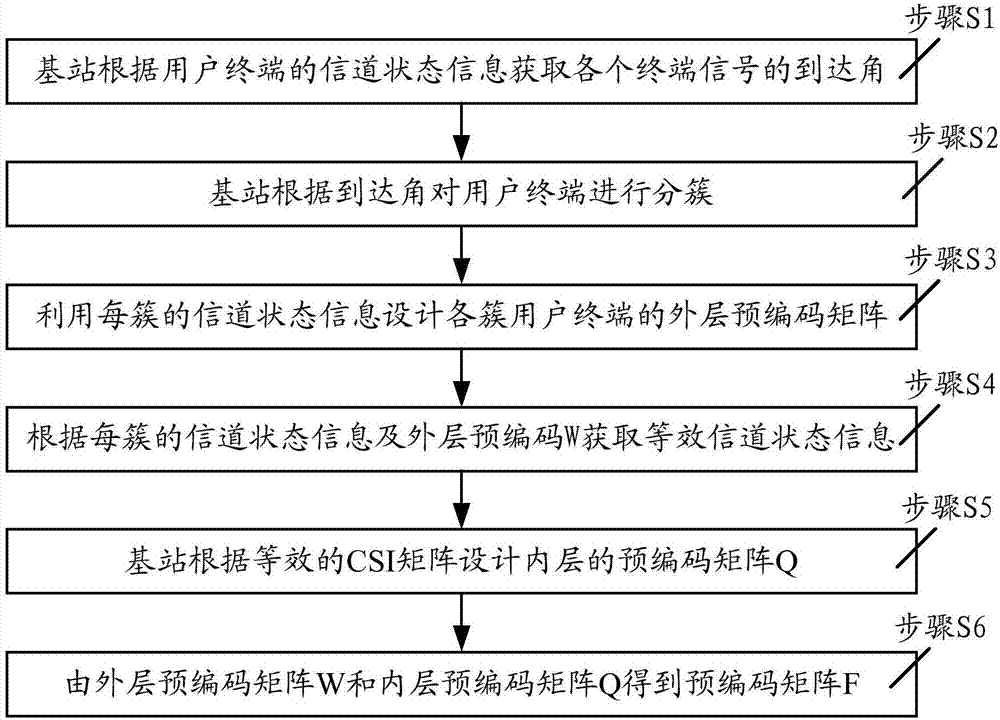Large-scale MIMO system precoding method applied in gathered user scene
A large-scale, precoding technology, applied in the field of massive MIMO system precoding, can solve the problems of performance degradation, amplified transmission signal power, large number of users, etc., and achieve the effect of reducing computational complexity and good performance
- Summary
- Abstract
- Description
- Claims
- Application Information
AI Technical Summary
Problems solved by technology
Method used
Image
Examples
Embodiment 1
[0061] Set the number of base station antennas M=50, the number of user antennas is K=4, the users are divided into L=2 clusters, each group has users, assuming that the angles of arrival of the users are: and Users gather together in pairs, such as figure 2 shown. The present invention takes the angle of the user of the first cluster as and The angle of the user in the second cluster is and The corresponding channels are h 1 ,h 2 ,h 3 ,h 4 The present invention can obtain the channel matrix of the first cluster and the second cluster as Therefore, the present invention can obtain the channel matrix composed of the i-th user of each cluster as and right and Do ZF precoding separately to get the precoding matrix and Therefore, the precoding matrices of the first cluster and the second cluster are and to get the equivalent channel matrix and Carry out precoding design based on ZF-GMD-THP respectively, and get the first cluster of precoding ...
Embodiment 2
[0064] Set the number of base station antennas to M=100, and the number of user antennas to K=12, assuming that the angles of arrival of the users are: and Users gather three by three. Therefore, the present invention can divide users into L=4 clusters, each group has users, the present invention takes the perspective of users in the first cluster as and The angle of the user in the second cluster is and The angles of users in the third cluster are and The angle of the user in the fourth cluster is and see Figure 7 , shows the performance simulation diagram of embodiment 2, the bit error rate of the system obtained by using three precoding methods respectively, where 'ZF' represents the simulation performance of ZF precoding known by the base station for all downlink CSI matrices H : 'ZF-GMD-THP' indicates that the base station knows the simulation performance of all downlink CSI matrices H using ZF-GMD-THP precoding; 'ZF-GMD-THP Clusters' indicates t...
Embodiment 3
[0066] The number of base station antennas is set to M=100, and the number of user antennas is set to K=12. Assume that the angles of arrival of the users are: and Four users gather together, users are divided into L=3 clusters, each group has users, the present invention takes the perspective of users in the first cluster as and The angle of the user in the second cluster is and The angles of users in the third cluster are and see Figure 8 , shows the performance simulation diagram of Embodiment 3, the bit error rate of the system obtained by using three precoding methods respectively, where 'ZF' represents the simulation performance of ZF precoding known by the base station for all downlink CSI matrices H : 'ZF-GMD-THP' indicates that the base station knows the simulation performance of all downlink CSI matrices H using ZF-GMD-THP precoding; 'ZF-GMD-THPClusters' indicates that the base station knows all downlink CSI matrices H , the simulation performanc...
PUM
 Login to View More
Login to View More Abstract
Description
Claims
Application Information
 Login to View More
Login to View More - Generate Ideas
- Intellectual Property
- Life Sciences
- Materials
- Tech Scout
- Unparalleled Data Quality
- Higher Quality Content
- 60% Fewer Hallucinations
Browse by: Latest US Patents, China's latest patents, Technical Efficacy Thesaurus, Application Domain, Technology Topic, Popular Technical Reports.
© 2025 PatSnap. All rights reserved.Legal|Privacy policy|Modern Slavery Act Transparency Statement|Sitemap|About US| Contact US: help@patsnap.com



